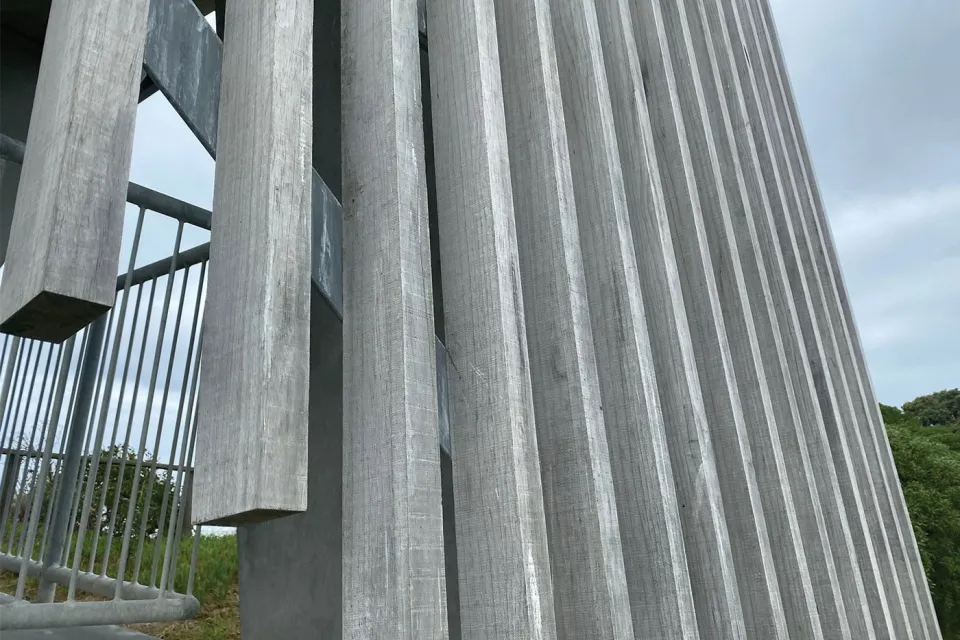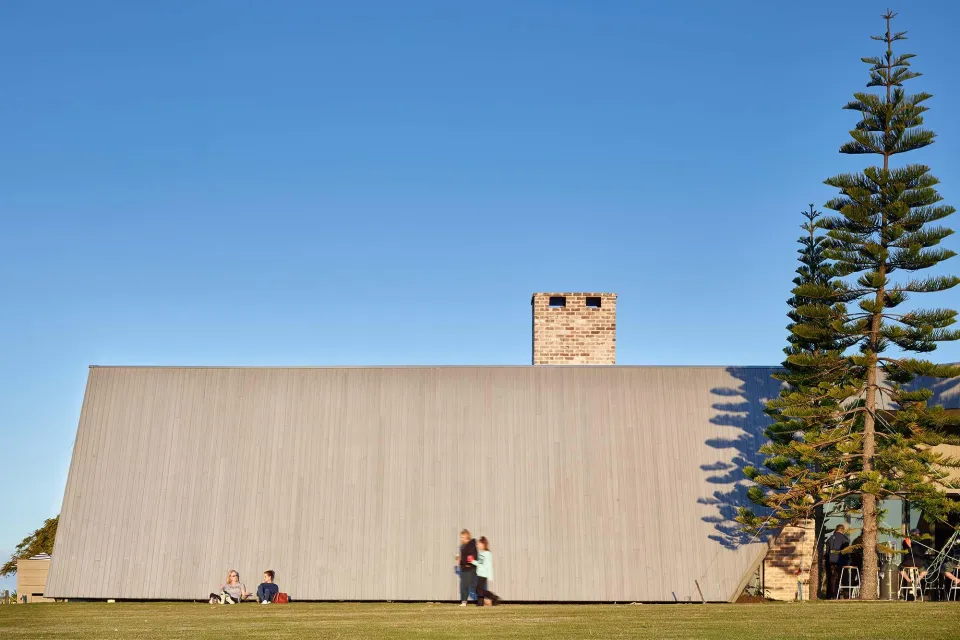-
About
-
Products
- By Timber Product
- Cladding
- Decking
- Screening
- Panelling
- View all
- By Application
- Exterior Cladding / Siding
- Exterior Rain Screen
- Interior Walls & Ceilings
- Soffits
- Screening, Fins & Battens
- Windows, Doors & Joinery
- Posts & Beams
- Accessories
- Coatings
- Fixings
- Samples
-
Resources
- Projects
- Contact
Understanding Timber Durability Near the Ocean
With the ocean on all sides, Omaha House is a sanctuary in a windy ocean estuary.
Using timber cladding or battens as a feature on a building that’s located very close to the ocean is a relatively harsh application for building materials, and does present some unique conditions that need to be considered for timber.
In a coastal environment, some of the conditions to consider are; UV intensity, mechanical weathering (sand particles and dirt etc.), salt spray and fungal decay. Interestingly, fungal decay is the only factor that can lead to timber rot, the others mentioned only affect weathering and have very little (if any) bearing on timber rot/decay - and thus durability.
One of the benefits of using timber in this environment is that unlike other materials (including some metals), timber is not subject to corrosion from salt spray.
Fungal decay occurs when the timber retains moisture for long periods of time. For example, using timber in a humid tropical environment would be a harsher application than next to the ocean. In areas such as the UK and Scotland where it’s incredibly damp, they’ve been using Durability Class 2 timbers for several hundred years.
UV intensity, mechanical weathering, and salt spray will affect the surface texture of the timber and lead to the coatings not lasting as long, and potentially requiring more regular maintenance. However, these factors do not lead to timber rot or decay.
As a Durability Class 2 timber (out of ground AS5604), Vulcan can be used with the peace of mind that it will last for up to 30 years, however, if maintained periodically it could be much longer. All Vulcan timber cladding and battens in Australia are LOSP treated to H3 and warranted for 25 years for durability and termite resistance (conditions apply).



